by Ang Yik Han
Born in Kulangsu Island off Amoy, Chua Chwee Oh came to Singapore at the age of 14. He studied till 17 or 18, after which he went into business. Beginning with trading between Singapore and Medan, he founded the firm Hock Heng in 1920 which had branches in Rangoon, Annam and other cities. It dealt mainly in local produce like dried fish and provisions. The biggest segment of his business was in French-controlled Annam, followed by British Malaya and the Dutch Indies. He was the second chairman of the Amoy Association (1940-1941) after its founding, and also a chairman of the Goh Loo Club.
Active in the China Relief Fund’s efforts in raising funds to support the Chinese forces against the Japanese, he was known for donating $100,000 single-handedly under his firm’s name. He also encouraged others to contribute by setting an example when the need arose. It must have been a bitter blow for him during the Japanese Occupation when he was forced to join the Hokkien section of the Overseas Chinese Association (OCA), the umbrella body set up by the Japanese to force the Chinese community to pay war reparations.
Chua Chwee Oh died in 1960 at the age of 64. His first wife Mdm Tan passed away at the young age of 32 and is buried together with him. His second wife was Mdm Ng. The place of origin inscribed on his tombstone is “Si Ming” (思明), another name for Amoy coined by Koxinga when the island was his base of operations against the encroaching Qing forces. This name evokes Koxinga’s longing for the glory days of the Han Chinese Emperors in the Ming Dynasty. Barred from use after the Qing Dynasty consolidated its control over all of China, this place name was revived after the Qing Dynasty was overthrown.
The tomb is at Hill 3, about 10m behind and to the left (facing uphill) of Tan Boo Liat’s tomb.
On 2nd January, 2014, June Tan witnessed and photo documented the exhumation of her grandfather, Ong Kim Soon. She also shared with us the testimonial of how a promise was fulfilled to carry on the lineage of another family. It speaks to men and women of honour and ties of kinship which live on till today.
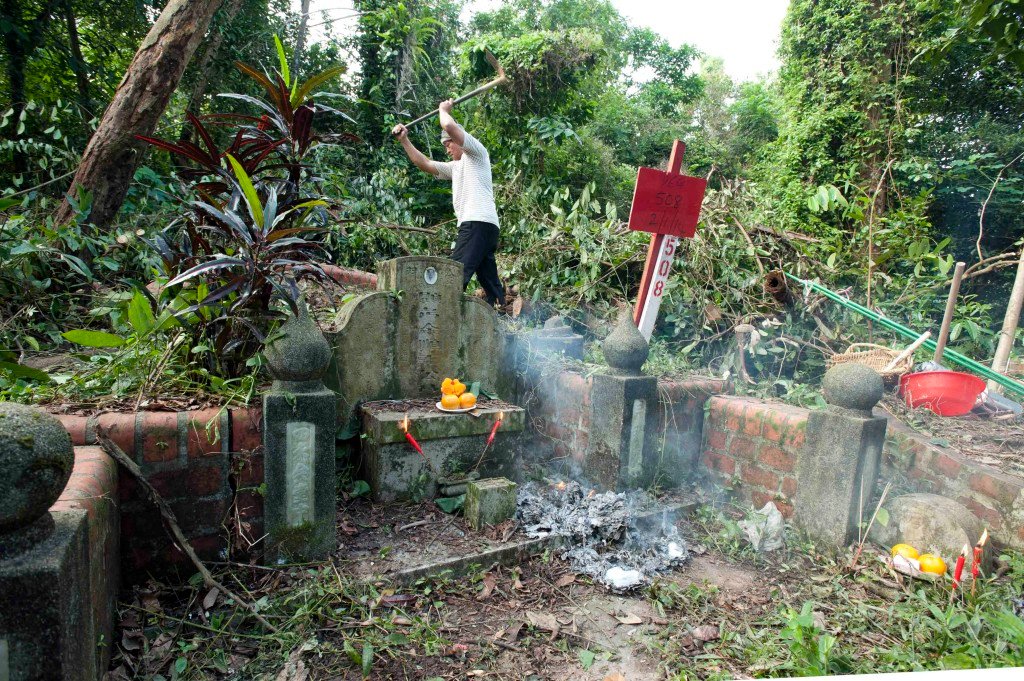
The exhumation of Ong Kim Soon begins, after the family conducted their pre- exhumation rituals (photo June Tan)
***
By June Tan
My grandfather was an ordinary man. He worked hard to make ends meet and was an honest man of principles. When he passed away at the age of 47 , he left behind his wife & 6 children aged between 6-22 years old then.
The story I want to share of my grandfather has to start from my great great grandparents.
My great great grandfather Ng died at a very young age. He was in his 20s then. He left behind his wife but no descendants. The women of that era usually did not remarry if their husband passed on. It was deemed to be their duties to take care of their in- laws .
However, my great great grandmother was a young lady in the prime of her life at that time. Her mother- in- law decided that she should not stay as a widow and allowed her to remarry. She, however, set a condition for the man (suramed Ong) who was to marry her- that the first son born by them had to take the surname “Ng” (黄). As a gratitude to the old lady, they readily agreed.
Soon after, my great grandfather was born and he took the Ng surname. However, great great grandfather Ong soon fell very ill and with his wife they were unable to produce a 2nd child. Their son, my great grandfather had no option but to reinstate his surname to Ong in order to perpetuate the Ong family line.
The older generation is a generation of principles. It was resolved that the next male child born in the family will carry the surname of Ng to honour the promise of my great great grandparents.
Years later, my grandfather was born and he adopted the “Ng” (黄) surname. In fact, of the 3 sons born in that generation, my grandfather and his 2nd brother took on the Ng surname as a gratitude to the Ng family.
At age 47, my grandfather passed away. All that he left behind was a meagre sum of S$24. The family was faced with the task of paying for a decent burial place.
Seh Ong Sua (which adjoins Bukit Brown) was the only cemetery with free burial grounds available for the Ong descendents . My grandfather’s brothers, my grand uncles, approached the person in charge of the Ong Clan then. However, only descendants of the Ong clan could be buried there. After hearing the origins of my grandfather’s surname, the Ong clan agreed to accord him a burial ground in Seh Ong on condition that that he had to use his Ong surname on the headstone of his grave.
Hence, the surname on his tomb is Ong (王) whereas his children will continue to take the Ng surname.
For these reasons, my great grandmother had “set” a rule for my mum’s generation that they are allowed to marry Ngs’ but not Ongs’ as that is the origin of their bloodline.
***
A few photos from June Tan’s album of her grandfather’s exhumation. The coffin was fully intact and the set of bones, nearly complete. With her permission, the complete album which she has captioned as a photo essay, is available here
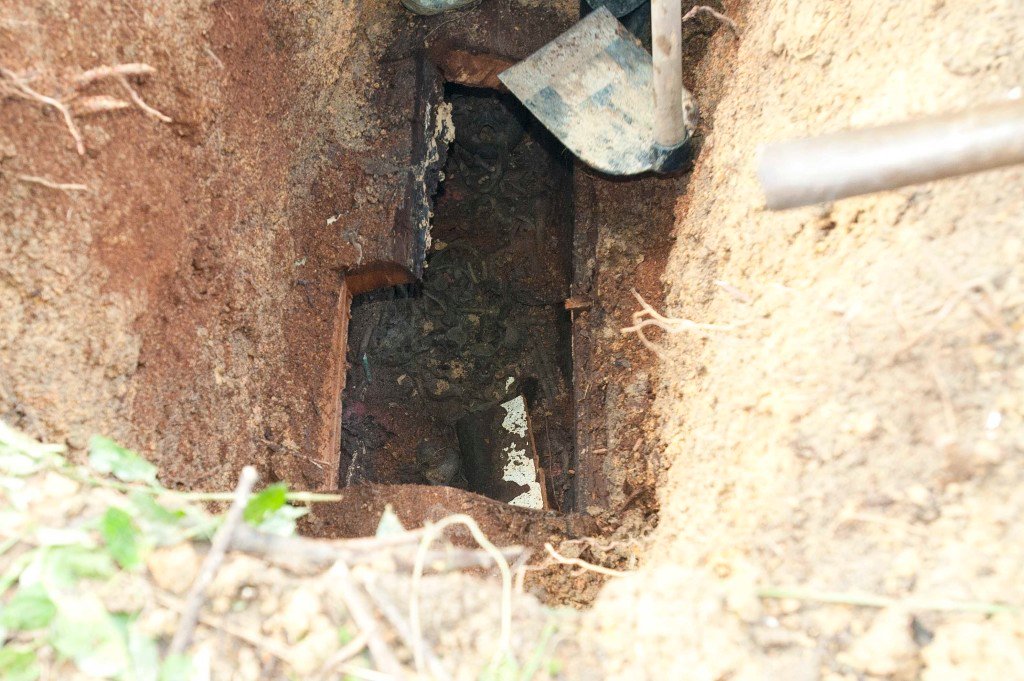
The remains after the coffin (which was fully intact) was opened with an electric saw (photo June Tan)
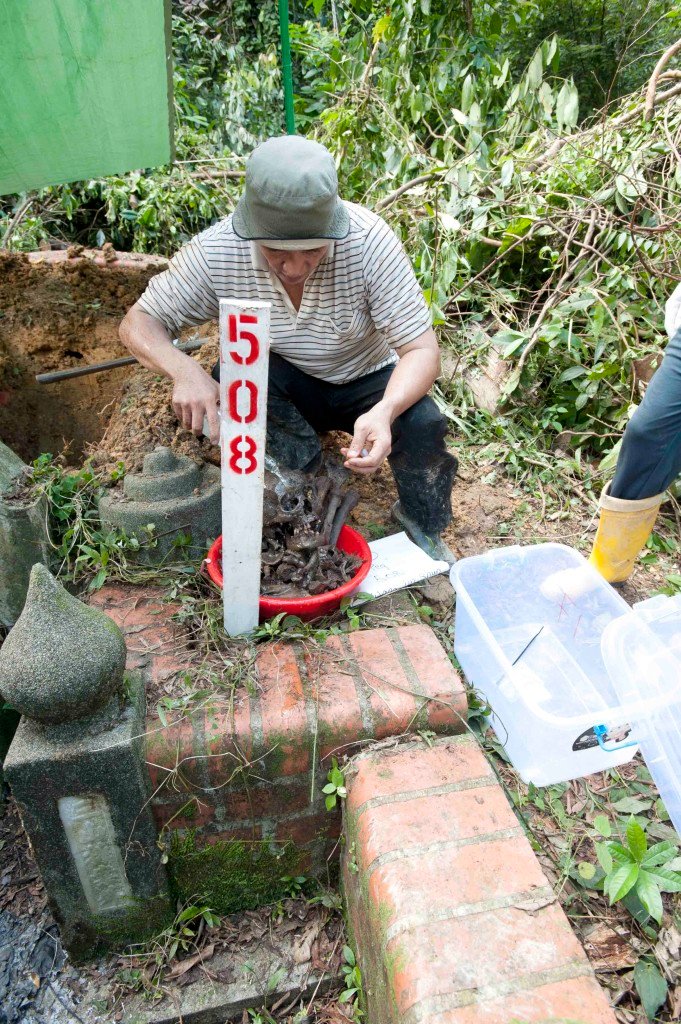
The bones are washed with white wine as required by traditional exhumation practices. (photo June Tan)
***
Ong Kim Soon has moved to Yishun Columbarium. Rest in Peace.
Editor’s note: We would like to thank June Tan for sharing her photos of her grandfather’s exhumation and her family story with us. If you are a descendant who has ancestors staked for exhumation, please share your story with us.
Email us: a.t.bukitbrown@gmail.com
You can read about another first hand account by a grandson, who witnessed his grandfather’s and aunt’s exhumations, here
Tripadvisor Travellers’ Choice® 2013 Winner “Ranked #16 of 665 attractions in Singapore. “
6 November, 2013.
Latest Reviews
“Get there before its too late…This is a very special place – peaceful, beautiful, historic, and a natural wildlife haven”
Visit Bukit Brown cemetery while you still can – before the bulldozers move in to create yet another expressway. This is a very special place – peaceful, beautiful, historic, and a natural wildlife haven. Intricately carved statues guard many of the old gravestones, which are often adorned with gorgeous antique tiles painted with flowers and peacocks. There are several pathways to explore and so the cemetery also makes a lovely place just to visit for a ‘country’ walk. Kingfishers, monitor lizards, monkeys and nightjars are common sights, and some of the huge banyan trees are staggering. In recent months the ‘Friends of Bukit Brown’ have painstakingly signed and cleared pathways to the gravestones of many notable names from Singapore’s history, making this an even more interesting place to visit.
Visited October 2013
HilarySingapore
Singapore is a concrete jungle and if there is a garden, it is man-made, like Gardens by the Bay…..(except for) a historical site called Bukit Brown.
Today, I had the privilege of touring a historical site called Bukit Brown. Bukit Brown is a cemetery, where many of Singapore’s pioneer are buried and may soon be “awakened” from their peaceful slumber to make way for 8 lanes highway.
I toured with volunteers of Bukit Brown, and learn about the tombs of Tan Kheam Hock and his family. History is being collected as I write this review. The tour is made even more interesting with the descendants of Tan Kheam Hock in our midst. A definitely worthy visit for any tourist to Singapore, to see a side of Singapore which money cannot buy.
As Bukit Brown tour is manned by volunteers with a passion to preserve the heritage and culture of this little city state, one will need to visit Bukit Brown FB page to make enquiries of any tours.
Visited October 2013
IreneLim63
It was like stepping back into another place and time. You can see rays of sunshine illuminating the misty verdant hills, rich smell of the forest and hear sounds of delightful birds. It was somewhat surreal in heavily urbanised city but the oasis of tranquility calms the soul and the mind is clarified. What a wonderful place to go for a walk!
I joined a friend to witness the Cheng Beng festivity and was overwhelmed by the throngs of people with their prayer paraphernalia and the heavy traffic winds patiently through the hills. It was BUSY!
Then some 3 months later, I took a trip with the Brownies who gave free guided walks through Bukit Brown practically every weekends! It was like stepping back into another place and time. You can see rays of sunshine illuminating the misty verdant hills, rich smell of the forest and hear sounds of delightful birds. It was somewhat surreal in heavily urbanised city but the oasis of tranquility calms the soul and the mind is clarified. What a wonderful place to go for a walk!
Yes, we have the crowded Botanic Gardens, the monotonous MacRitchie & Pierce reservoirs, the hot Sungei Buloh Reserve and Chek Jawa Park is a little too far to reach but Bt Brown is way too cool! If you dare venture off the main track, you will encounter unusual structure, designs, engravings, statutes, reflecting the various cultures, beliefs & eras. You might encounter a monitor lizard, horse riders and almost always expats walking their dogs. Join the Sats & Suns groups of 10-20 people on the guided walks like the one I’ve taken, listening to the passionate guides who are bursting to share with you the stories of the hills.
Visited September 2013
Ally A
“The most beautiful place on earth”
Jo Prudence, descendant of George Henry Brown, after whom the cemetery is named.
A spectacular time-lapse aerial video of Bukit Brown
More beauty shots of Bukit Brown here
by Walter Lim
(Published in Zaobao on 1 November, 2013, translated by Fabian Tee )
Taking a Closer Look at Singaporeans’ “Interest in the Wild (side)”
I refer to the commentary by Mr Goh Choon Kang ( a media professional and a former MP) entitled “Looking from the sidelines at Singaporeans’ interest in the wild side” dated Oct 23, 2o13. In it he posed the question : “why did the dialogue between civilian and government not take place before unilateral action was taken by one party with the expressed hope of opening more channels of communication? Just reflect for a moment, how the official in charge of heritage affairs must be feeling right now.”
This article has created considerable public misconception. The Prime Minister, after all, had on the occasion of the opening of the Heritage Festival 2013 said that:
“The government does not own the Singapore heritage. It does not define the Singapore heritage. Our heritage is a collection of individual memories, woven together into a national story. It is something that belongs to every Singaporean, and which each one of us can contribute to and help to preserve, individually and collectively”. PM Lee.
Therefore, it stands to reason that any civilian initiative to help Singapore preserve its heritage should be a source of comfort for the authorities. Besides, the National Heritage Board’s Alvin Tan is a broad-minded and enlightened official, and not a petty/small-minded individual as implied by Goh.
In Goh’s article entitled “The basis and limits of dialogue”, he stated that “perhaps I lacked culture or cultural depth, but I feel that most Singaporeans are unlikely to bring their old or young to a desolate place in the middle of nowhere during their free time”.
(I agree) Most people are of this (Goh’s ) same mindset – civilians and officials alike, think that way. It was under such dire circumstances that the application to World Monuments Fund was made. Can anyone imagine holding a dialogue under such circumstances? It would have been laughable. Fortunately the unrelenting efforts (of many) have paid off and many parents do bring their children and elderly parents to Bukit Brown. For his sake and society at large, I sincerely hope that Goh will deepen his cultural depth so that more young and old will come to Bukit Brown for leisurely walks.
On the government’s heavy burden of providing for the basic necessities for millions, Goh said that the volunteers are of the opinion that “you (government) can resolve to solve the existing traffic problems, just leave our Bukit Brown alone. For the record, many alternative plans/suggestions were submitted to the government once the road announcements were made. Subsequently there were suggestions to leave the tombstones by the roadside, blending the past with the modern. Recently, we also took part in the exercise to incorporate Biddari’s history into the planning of the new town. These efforts collectively demonstrate that the volunteers are trying to strike a balance between preserving the past and developing the future. Unfortunately, none of our suggestions/feedback for Bukit Brown found fertile ground and they have since fallen by the wayside.
On the other hand, the plan for Lornie Road reflects a lack of foresight and planning. Three years after expanding the number of lanes on Lornie/Adam Roads in 2009, the government now anticipates a reduction in the (Lornie) lanes after the Bukit Brown highway is built. Instead of expending money on the expansion and subsequent shrinking of Lornie Road, why not just build the Bukit Brown highway in the first place? The excitement that followed the government’s undertaking to quicken the pace of housing and transport infrastructural development after the last General Election quickly morphed into a hidden worry. Plans for building Bukit Brown highway were carried out without the benefit of any impact assessment particularly that of a heritage impact assessment in face of a large scale destruction of historic artifacts. In the final analysis, is the Bukit Brown highway really meant for development or is it an unmitigated disaster?
When the plans were announced last year, an estimated 5000 gravestones were to be affected and LTA then reduced that to 3746 due to a change in road plans. Now the official number has been re-estimated at 4153. What is really going on here? Even more worrisome for us is the sense of how heritage preservation is considered in this country. Minister Tan Chuan Jin said in parliament that (the preservation of) material culture including gravestone, carvings and tiles etc are very important. Yet after discussions at the higher level, there has been no concrete plans for a proposed memorial garden for the preservation of gravestones of important personalities. The imminent threat of destruction to thousands of graves has not provoke the local museums or Chinese clan associations to show any interest in preservation whatsoever. Dare I ask , is any government body or department truly satisfied with this (state of affairs) or process?
Leaving aside Goh’s portrayal of the Bukit Brown volunteers as a bunch of “wild enthusiasts”, this unlikely group of individuals who busy themselves over all things related to Bukit Brown, stands in stark contrast with the total lack of interest displayed by the leaders of the Chinese Clan Associations. This lackadaisical attitude even extends to the discovery of the tombstones of founding fathers of their clans.
At a time when the Gan Eng Seng alumni paid their respects to his grave during Qing Ming, the Chinese High and Nanyang Girls High and Industry Commerce Schools etc have instead chosen to forget their history.
When a country’s polity has no regard for our collective history and the hallowed grounds of our Chinese pioneers and civilisation, evoke nothing but disdain, are policies to blame and have the people all forgotten (the past)?
As Bukit Brown is doomed to its fate, a group of volunteers -whose ranks comprises Indian, Dutch and Japanese and others who know not a single Chinese character – are picking up the Chinese language to decipher tomb inscriptions, studying the various pioneers’ connections with old temples, clan associations, schools and some even extending their research into local history and the Chinese civilization. This abiding interest of the so called “wild enthusiast” calls for a deeper sense of reflection. Surely, this phenomenon is hardly one that can be understood by anyone looking from the sidelines.
More on the road expansion at Lornie Road here.
The full report in Chinese:
正视新加坡人的“野趣”
观点碰撞
吴俊刚先生在10月23日“侧观新加坡人的野趣”中说:“为什么
李总理在文化遗产节时说:“文化遗产并不专属政府,更不能由政府
吴先生曾在“协商的基础和限度”这篇文章就这么说:“也许我缺乏
武吉布朗就是在这种凄风苦雨的情况下,提出申请世界历史遗址,别
政府有为数百万公民解决衣食住行的重任,吴先生更说:“你可以设
反观罗尼路是未曾深思熟虑的工程,2009年扩建后通车三年,就
去年估计5000坟墓受影响,陆管局强调因修改道路设计而减少到
姑且不论武吉布朗学会为何成为吴先生笔下的“野趣”组织,倒是日
为政不思追慎远,一堆黄土惹人嫌,是政府的政策妨碍华社追慎远,
林志强
作者是文史工作者和武吉布朗华语导游
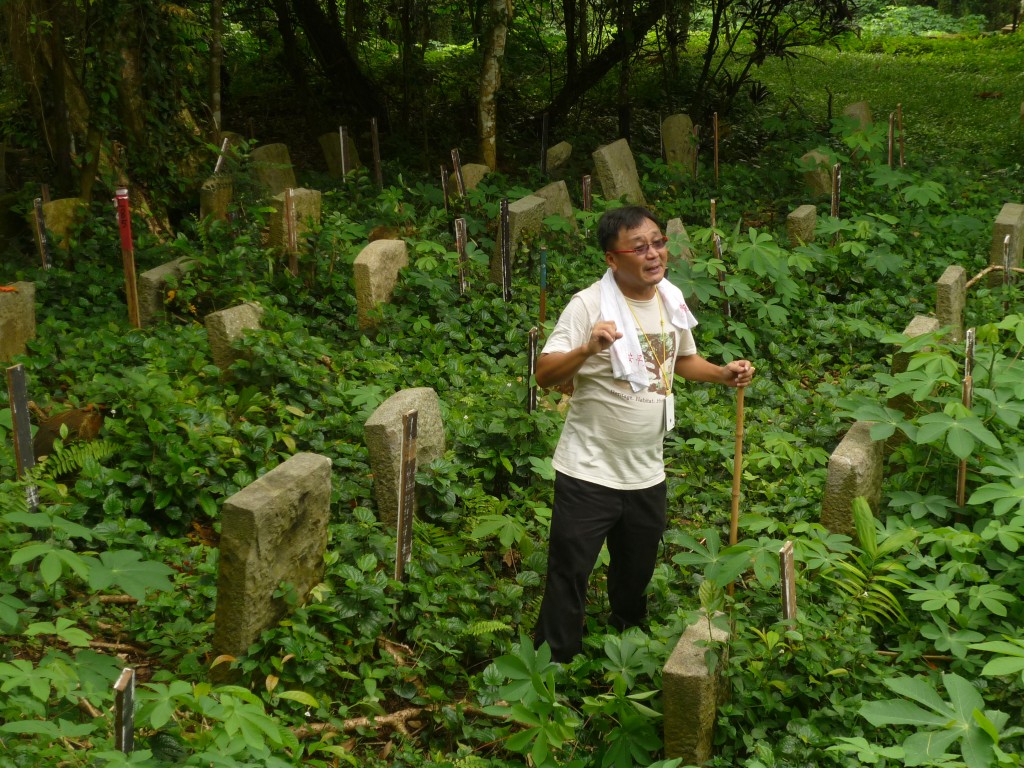
Cluster of Qing Tombs circa 1830s resited twice before Bukit Brown – now staked for exhumation to make way for 8 lane highway (photo Catherine Lim)
At Bukit Brown, one often finds couplets on the “pillars” of the tombs. They embed auspicious meanings and also tributes to the departed.
The tomb of Chen Yen Soon has a pair which speaks of the rewards which await those who live a good life.
为善百世興 Hundred years of prosperity for kind acts.
積德千年好 A good thousand years for those who accumulate good deeds.
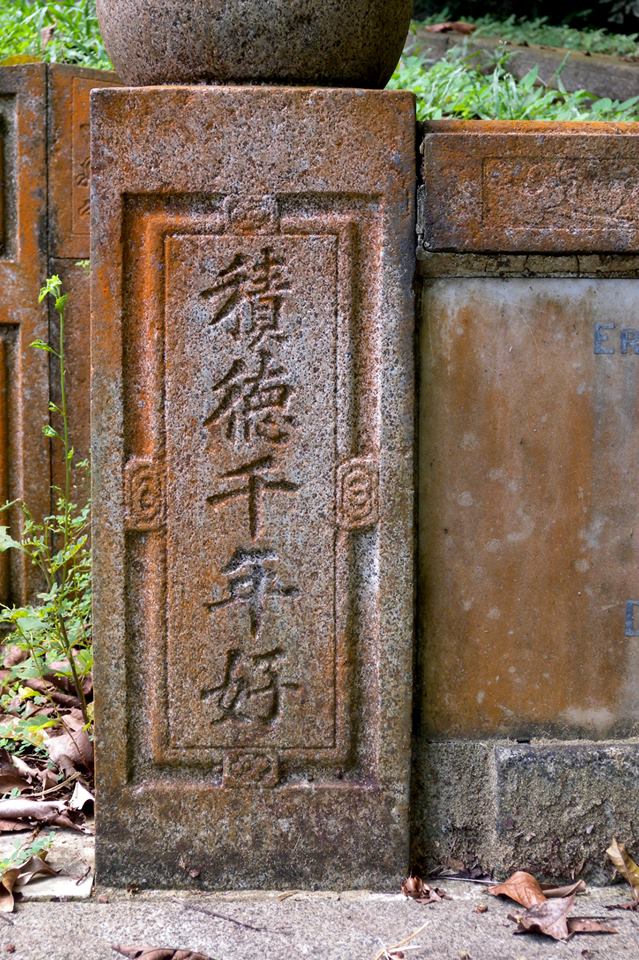
積德千年好 A good thousand years for those who accumulate good deeds. (photo Khoo Ee Hoon)
An inscription found in a temple in Silat Road on a photo of the Earth Deity or Tua Pek Kong, evokes the same sentiments.. Brownie Fabian Tee summarises:
The couplet reads fortune with virtue inspires respect from a thousand families (from many) the uprightious shall inherit the earth as deities for innumerable (ten thousand) generations. When read together, it’s an allegory to 福德正神。
More examples of couplets here
by A.J Leow
My trips to Bukit Brown Cemetry tend to stir up some deep-seated emotions within me. My first, which followed a trip to Gardens by the Bay, had evoked images of contrast. On one hand, there is this rich but neglected repository of our cultural and natural heritage amid the lush, unkempt undergrowth and the other, an artificial construct or what I would often refer to as a huge manicured bonsai.
At the Gardens, you put on a headset; pressed some buttons to listen to a disembodied voice on a guided tour. It’s like calling your bank to cancel the annual credit card charge. Quite impersonal. At Bukit Brown, there are no ticket queues, entry fees or closing hours. You get to pepper some guy – in a sweat-soaked T-shirt with a towel around the neck – with questions about our forgotten past.
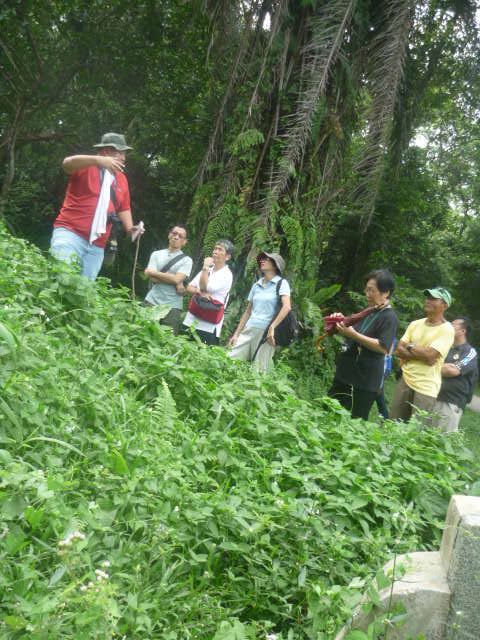
Uphill is a breeze with Brownie Peter Pak telling stories of our forgotten pioneers (photo Catherine Lim)
The bonus is that you may be invited to join the Brownies at a zhi char place after the tour for a get-together makan. How much more Singaporean can you get!
My latest trip came about on National Day 2013 which was followed by a family viewing of the annual parade and the fly-past. While the vignettes of our forefathers by the guides at Bukit Brown – especially that of how they arrived by sea and spied the shimmering lights of the harbour of 星汌 (Isle of Stars) which must have lifted their hopes of a better tomorrow – touched many a chord; the vain exhortations by the emcees at the waterfront parade to portray the Merlion as a national symbol fell really flat, especially when the mythical creature wasn’t sure if it was a lion or a transgendered mermaid. To me, it was an apt metaphor of our confused national identity.
Not so the narrative of Bukit Brown.
At the official parade, there was an actress masquerading as a samsui woman. As a young boy heading off to school, I have seen scores of these weathered-beaten, hardy red-hat women from southern China squatting and lining the roadside, some of them holding rolled-up cigarettes with their calloused hands in the early hours of dawn at Redhill Road. I can assure you, none of them look like the ruddy faced actress on the national stage!
The contrast could not be more stark. Listening to the story-tellers at Bukit Brown to me would be akin to reading a rich body of literary work by local author Catherine Lim, or the playwright Kuo Pao Kun. Bukit Brown is our history; while some of the NDP performances came across like a fleeting piece of newspaper ad or TV commercial. Not quite authentic.
The next day, I picked up a copy of The New Paper to read its coverage of the Brownies’ tribute to our country’s early pioneers. On the following page was a piece on the make-up of the hardcore Singaporean. There were the usual comments about the use of Singlish, the tendency to gripe; pressing lift buttons repeatedly and oh dear, even ‘common resentment towards foreigners.’ The MP for Marine Parade GRC, Tin Pei Ling, mentioned the love for chicken rice, our hardworking nature and the willingness to stay and defend the country during a crisis. Except for the first item, I wouldn’t call that a uniquely Singapore trait.
There was little mention about our heritage and our forefathers who helped build the place we now call home. On an existentialist level, they seem to be no longer part of the wellspring of our national consciousness – the collective National Soul. Are we in danger of becoming the equivalent in Plato’s Cave, bereft of our true identity, which seems to have been reduced to the image of a buffet of laksa, char kuay teow and other hawker’s fare, and a limited lexicon of words such as ‘kiasu’, ‘chope’ and ‘shiok’? Surely, being Singaporean is more that that!
It’s unfortunate that for most of us (that includes me); the history of Singapore has been largely bracketed by or reduced to the two Rs – Raffles and the founding of our Republic. The first is a man in white; or rather a statue in marble white next to the Singapore River, whom most of us don’t really know much about except that his name has been hijacked for a hotel, school, business hub, shopping mall among others, including Singapore Airline’s business class. The second R would be the story of the Men in White, which I bet many of the younger generation would be clueless of who they are or were, with perhaps the exception of our elderly statesman, Lee Kuan Yew.
There’s a yawning chasm in between the two Rs. We need to fill them with what would be the equivalents of our own versions of Benjamin Franklin, Rockeller, Carnegie, and Edison in the largely blank pages of our own history. Names like Tan Ean Kiam (banker and philanthropist), Lim Kim Seng (Justice of the Peace and Teochew leader) and Tan Kim Ching (Kapitan Cina and diplomatic consul to Siam, China and Russia) and bring them back into our national consciousness and collective memory. Make it kind of a Lazarus Project with a uniquely Singapore theme.
That’s why I feel strongly that Bukit Brown Cemetery is a heritage landmark worth saving for the sake of all Singaporeans – now and the future. It’s where the national soul resides. It’s a living museum with names that most Singaporeans can readily identify with, such as the bus routes we take to work (Jalan Boon Lay); MRT stations (Boon Keng); schools we go to (Gan Eng Seng) and makan places (Joo Chiat Place), to name just but a few. There are more than 40 names of streets and places which can be traced back to Bukit Brown.
What’s more, I can imagine their descendants mingling among us – cheek-to-jowl in the MRT and buses; in the queues at NTUC supermarkets; for Toto and 4-D tickets and the char kuay teow stall at Hong Lim complex.
Our forefathers came from afar across the seas – many as coolies including my own grandfather – and caught a glimpse of 星汌 and like the biblical story of Abraham, their descendants have multiplied like the ‘stars’ they imagine to be the bright lights of the future. They chose to come, live, die and be buried here. We owe our presence to them. We need to remember and honour them. The story of Singapore is built on the backs of immigrants, and we should keep on telling their stories unceasingly. More will come because of they have built, what we will build on the foundations they laid. Those newcomers too will catch a glimpse of the shimmering lights of 星汌 (Isle of Stars) when their planes fly over Changi International Airport. Majullah Singapore!
Bio: A.J. Leow is the grandson of a coolie who has brought his children to Bukit Brown several times to understand their roots. His family celebrated National Day at Bukit Brown this year.
Related:
History of the Dead, Heritage of the Living
As part of Bukit Brown : Our Roots, Our Future, a series of talks were programmed to enrich the exhibition which was held at the Chui Huay Lim Club, the co-organiser of the exhibition.
Here are the video recordings, released with kind permission from the speakers.
Sunday, 20th June 2013
Mok Ly Yng – A Historical Survey Of Bukit Brown
This historical survey of maps reviews the geography and distribution of cemeteries in Bukit Brown and its environs. It also traces the development and changes of the area from the mid 19th century to the 21st century.
Speaker’s bio: Mok Ly Yng is a freelance GIS consultant and map researcher. He received his M.Sc. in Geographical Information Systems (GIS) from the University of Edinburgh. He had worked previously in the Mapping Unit and the National Archives of Singapore.
Dr Ho Hua Chew – The Ecological and Biodiversity Importance of Bt Brown.
Having become forested through several decades of wild vegetation growth after being degazetted as a cemetery, the area generally has become attractive to many wildlife, in particular the forest birdlife. The talk will focus on the important and interesting forest wildlife that is recorded in the area.
Speaker’s bio: Dr Ho Hua Chew is the Vice-chairman of the Conservation Committee of the Nature Society (Singapore) as well as a Council member of the Society. He has been involved in conservation projects for the Society as a volunteer since the late 80s, including the formulation of Sungei Buloh conservation proposal and the Master Plan for Nature Conservation in Singapore.
Charles Goh – All things paranormal in BBC
Singapore’s own ghost buster, shares stories from beyond the graves, and findings from his investigations in paranormal activities.
Speakers bio : Charles Goh is the founder of the Asia Paranormal Investigators (API) which is a paranormal research based Society based in Singapore. API that strives to systematically analyze any strange occurrences happening in Singapore and around the region. Charles a trained guide with STB credentials has conducted many night tours at Bukit Brown
A very big THANK YOU to Brownie Ang Hock Chuan for videoing the talks!
The Guiding Guides Tour
Date: 19 May, Saturday
Time: 8.30am – 11.30am
We are opening up to the public just 10 places to join a training tour conducted by Raymond for our student volunteers. The route covers the most “staked” area in Bukit Brown, Blocks 5 and 2 and starts off with the largest single tomb located off Kheam Hock Road belonging to Oon Chim Neo, stake number 77. Please meet for this tour outside the gates at the junction of Lorong Halwa and Kheam Hock.
Please register interest here to book your spot
Date: 20 May, Sunday
Time: 8.30am to 12pm
Come conquer Hill 3 with our volunteer Guides: Claire and Keng Kiat (97903886), as they challenge you to keep up with them as they climb up and down the biggest hill in Bukit Brown, and introduce you to some notable pioneers who had made great contributions to Singapore in the first half of the 20th century. We also discuss the historical context of their lives and times. Hill 3 is the largest of the five hills at Bukit Brown.
Meeting Place: Under the large and beautiful, and possibly endangered, rain tree, at the Roundabout. After the main gate, go ahead another twenty metres, to the right of the SLA office. Please register interest here
For information on how to get there and handy tips please visit
http://bukitbrown.com/
==========================
Registration:
Our weekend public tours are FREE …
Optimally the group size is 30 participants (15 individuals/guide).
Please click ‘Join’ on the FB event page to let us know you are coming, how many pax are turning up, or just meet us at the starting point at 9am. We meet there rain or shine.
==========================
The tour:
The Bukit Brown area is about 233 hectares in extent, bordered by Lornie Road, Thomson Road and the Pan-Island Expressway. It lies just to the south of the Central Catchment Forest, being separated from it by Lornie Road and includes Singapore’s only Chinese Municipal Cemetery. With more than 100,000 graves, Bukit Brown is also one of the largest Chinese cemeteries outside of China.
We will start with a safety briefing and quick history and geography of the grounds, and share with you the story of a man with a duo identity …
We will take a leisure climb to pay respect to a school founder, as the actual school teachers and students had recently done so …
We then take a side track and visit one of the important founders of Bukit Brown, who thankfully is not affected by the proposed highway …
Another arduous climb, and we will drop in on three neighbours from Semarang (Central Java) …
No visit to Bukit Brown is complete without visiting the biggest tomb there, as well as the famous coloured Sikh Guards …
And there are more, if you can keep up with us …
Don’t forget to bask in the peaceful surrounds, and also chat with your guides and make friends with other participants. We are amateurs and volunteers, but we are passionate and serious about what we do at Bukit Brown, and we encourage sharing of knowledge.
Here is a map of the grounds:
http://bukitbrown.com/
We will be covering several pioneers in groups 5, 6, 11 and 12.
==========================
Please take note:
1. We will be walking mainly on paved roads. But there are hill treks so dress appropriately, especially your footwear.
2. Wear light breathable clothing. Long pants and long sleeves if you are prone to insect bites or sunburn. Bring sunblock and natural insect repellent.
3. Wear comfortable non-slip shoes as safety is important. Walking sticks are recommended.
4. Do read up on Bukit Brown before going so you have a better understanding of the place (e.g. BukitBrown.com)
5. Do bring water, light snacks, poncho/umbrella, sunhat and waterproof your electronics.
6. Please go to the toilet before coming. There are NO facilities anywhere there or nearby.
==========================
How to get there by MRT / Bus:
Bus services available: 52, 74, 93, 157, 165, 852, 855.
From North: Go to Marymount MRT and walk to bus-stop #53019 along Upper Thomson Road. Take Buses 52, 74, 165, 852, 855
Alight 6 stops later at bus-stop, #41149, opposite Singapore Island Country Club (SICC), Adam Road. Walk towards Sime Road in the direction of Kheam Hock Road until you see Lorong Halwa.
From South: Go to Botanic Gardens MRT and walk to bus-stop #41121 at Adam Road, in front of Singapore Bible College. Take Buses 74, 93, 157, 165, 852, 855. Alight 2 stops later at bus-stop, #41141, just before Singapore Island Country Club (SICC), Adam Road. Cross the bridge, walk towards Sime Road, follow the road until you see Lorong Halwa.
By car:
Turn in from Lornie Road, to Sime Road. Then, turn left into Lorong Halwa.
Parking space available at the largish paved area near the cemetery gates.
淸明- 杜牧 (唐著名詩人)
淸明時節雨紛紛 qīng míng shí jié yǔ fēn fēn
路上行人欲斷魂 lù shàng xíng rén yù duàn hún
借問酒家何處在 jiè wèn jiǔ jiā hé chù yǒu
牧童遙指杏花村 mù tóng yáo zhǐ xìng huā cūn
Incessantly the rain falls during Qingming
On the roads are travelers deep in sorrow
Where is there a tavern to be found?
The shepherd boy points to Xinghua (Almond Flower) Village in the distance
(poem by Dumu translated by Ang Yik Han)
My Cheng Beng 2012 is a photo essay by Toh Zheng Han in memory of his late Ah Chors (great grandparents), Ah Kong (grandfather) and Ah Ma (grandmother) It marks his family observance of the festival and perhaps a coming of age for him in a year which has seen him playing his part to save Bukit Brown. Zheng Han is a 3rd year student, currently studying English and History at NTU/NIE.
Reflection
On the morning of 31st March 2012, three days before the actual day of Cheng Beng on 4th April my family and I headed to Track 14 (Old Choa Chu Kang Road) to the Hokkien Cemetery and Chua Chu Kang Chinese Cemetery to pay respect to our ancestors. It had rained nonstop the night before. The poem 淸明- 杜牧 (唐著名詩人), captured the mood of the day, perfectly.
I only remember tagging along with the family for Cheng Beng about five years ago. I did not know why I wanted to go then. Maybe I thought it would be somewhat of an adventure to be climbing up the hills to visit my ancestors.
Recently, many Singaporeans including me have been trying to save Bukit Brown Cemetery from an 8 lane highway because we feel it is an intrinsic part of our nation’s history, heritage and habitat. Although I do not have any ancestors buried at Bukit Brown, it spurred me to find out more about my country and my ancestors. Personally, I feel that it is only by being able to find out about my country’s and ancestor’s histories that I am able to understand more about Singapore and myself. Cheng Beng offered me a chance to reflect upon this, to help me connect the past to the present and future; it reminds me that Singapore is home from the very day my great grandfather decided to make this place his home.
Family History (paternal)
This year, I decided to write this short reflection and take my camera to snap shot my family’s past. I have always wondered how my ancestors made the long and difficult journey out of their village many kilometers inland of Quanzhou, Fujian to Singapore without modern transportation such as cars, trains or planes. Instead they traveled the arduous journey by a boat all the way to Singapore. I guess I will never be able to find out or fully understand how it feels to leave home and make a new life for myself in a strange land. But I feel fortunate because my ancestor took that journey and I came to be born here.
My paternal great grandfather passed away about 20 years after arriving in Singapore a few years before the Japanese Occupation of Singapore. My father never knew him. Of my paternal great grandmother (his grandmother), he has only very vague memories as she passed away in the mid 50s a few years after he was born.
My father recalls life was tough growing up. He was one of 10 children and his parents – my grandparents – eked out a living raising poultry and pigs, and growing vegetables. Meals consisted mostly of porridge with soy sauce and some vegetables, and only occasionally a treat of meat. I have wondered how it would have felt to eat this meager meal day in and day out. But I am also guilty of complaining at times when my father cooks and I ask ‘Why is it the same thing again?”
It has only been in recent years that I felt a compulsion, a hunger to find out more about my family’s past and by extension to get a sense of my country’s past. Of course I realised I am no longer able to ask or hear stories from my grandparents who both passed away more than 10 years ago. I had not realised how much my grandparents doted on me when I was a child. But I am not about to let this deter me as I turn to my Ah pek (阿伯/ uncle), Ah kor (阿姑/ auntie) and the extended family to find out about my history, my story.
Cheng Beng 2012
1st Stop – Paternal great grandfather up the hill @ Track 14 Hokkien Cemetery
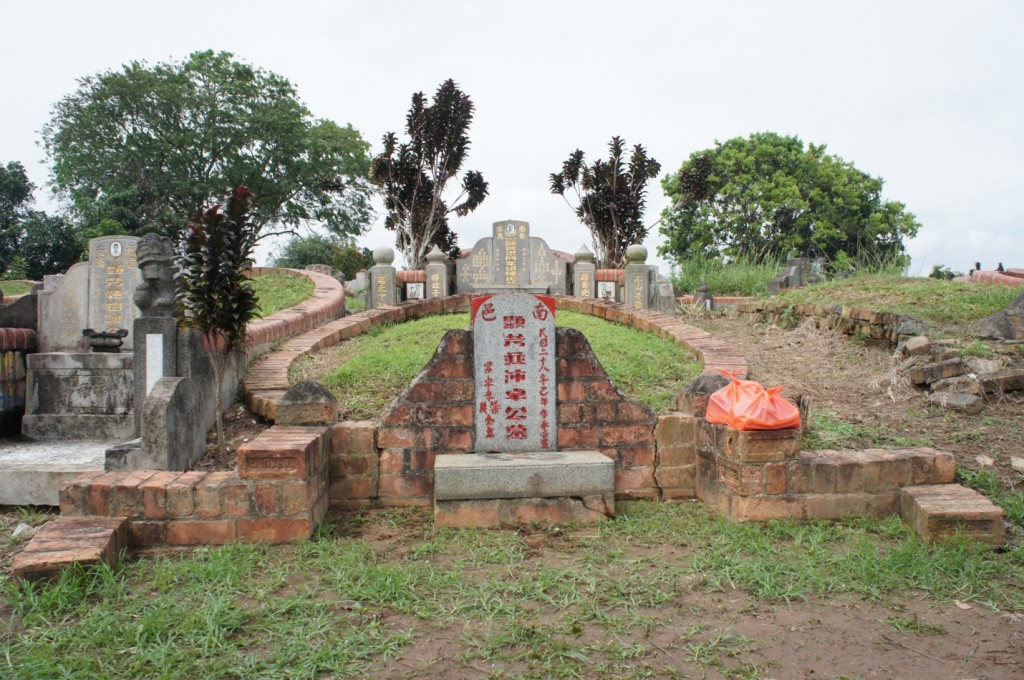
On top of a hill the simple pre- war grave of my paternal great grandfather, made almost entirely of bricks

The five-coloured paper represents the 5 cardinal directions and signifies that the grave has been visited. Some people choose to put the paper in the form of a flower for both aesthetic and pragmatic purposes, as paper can't be blown away by the wind
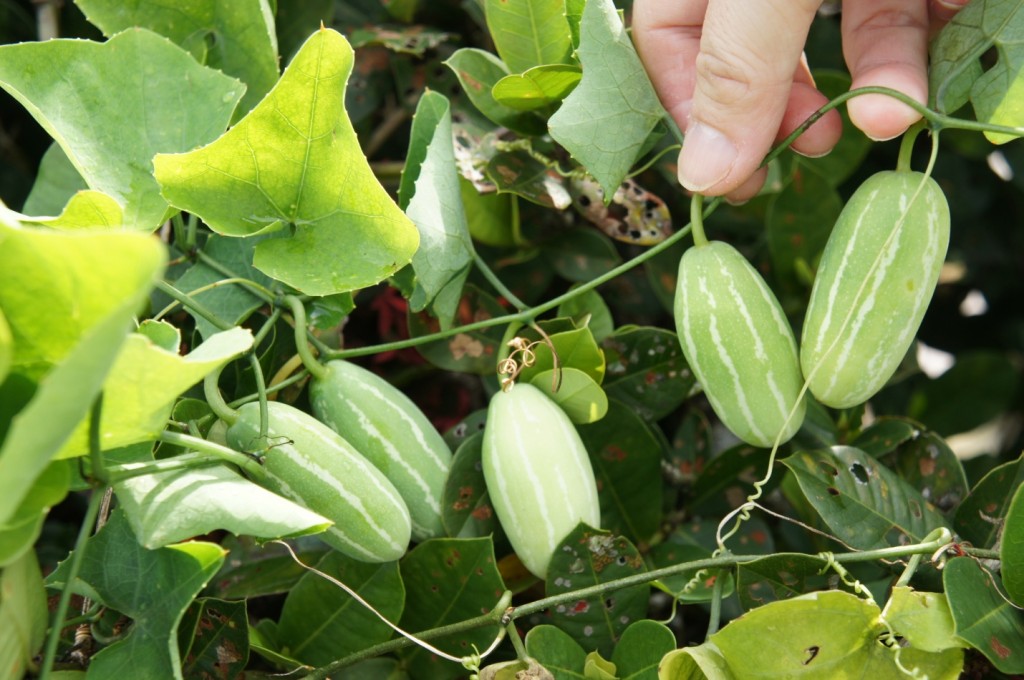
Some vegetables growing out of a grave about 3 metres away from my great grandfather’s grave
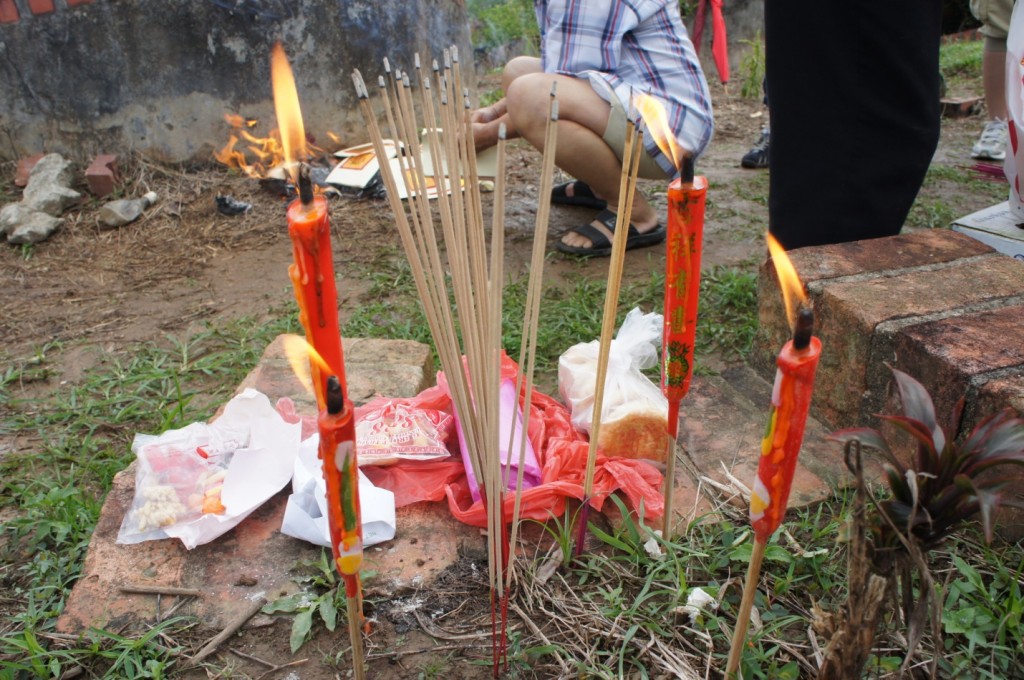
First up, offerings for the Earth Diety consisting of tea, sweets and biscuits together with the incense, special candles and joss paper that my uncle is burning. 3 incense sticks at anyone time
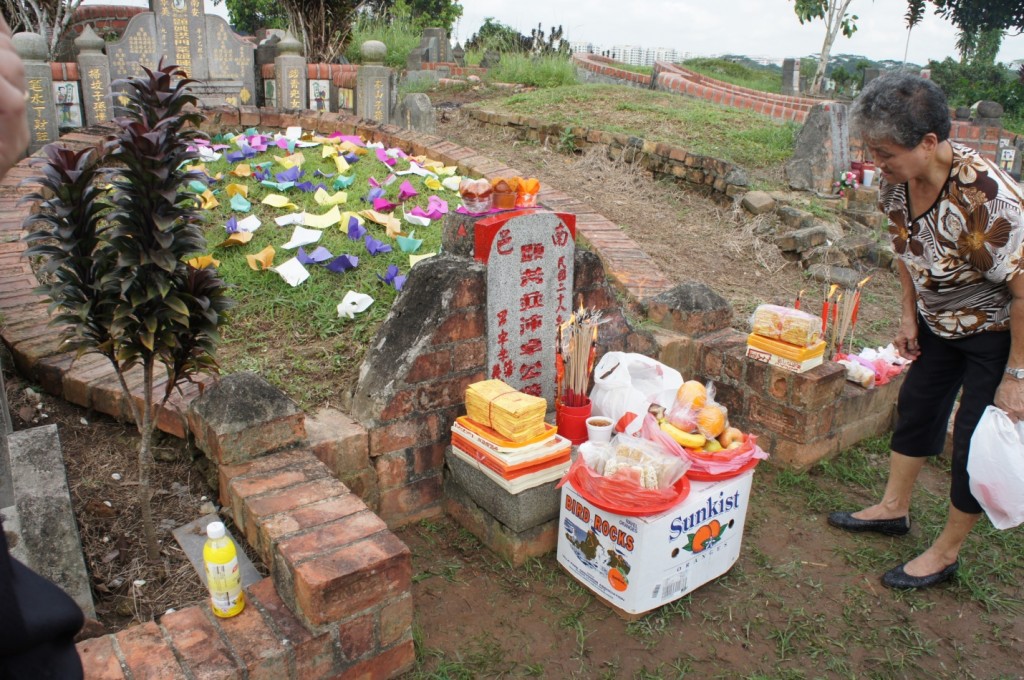
2nd Stop – Paternal great grandmother mid-hill @ Track 14 Hokkien Cemetery
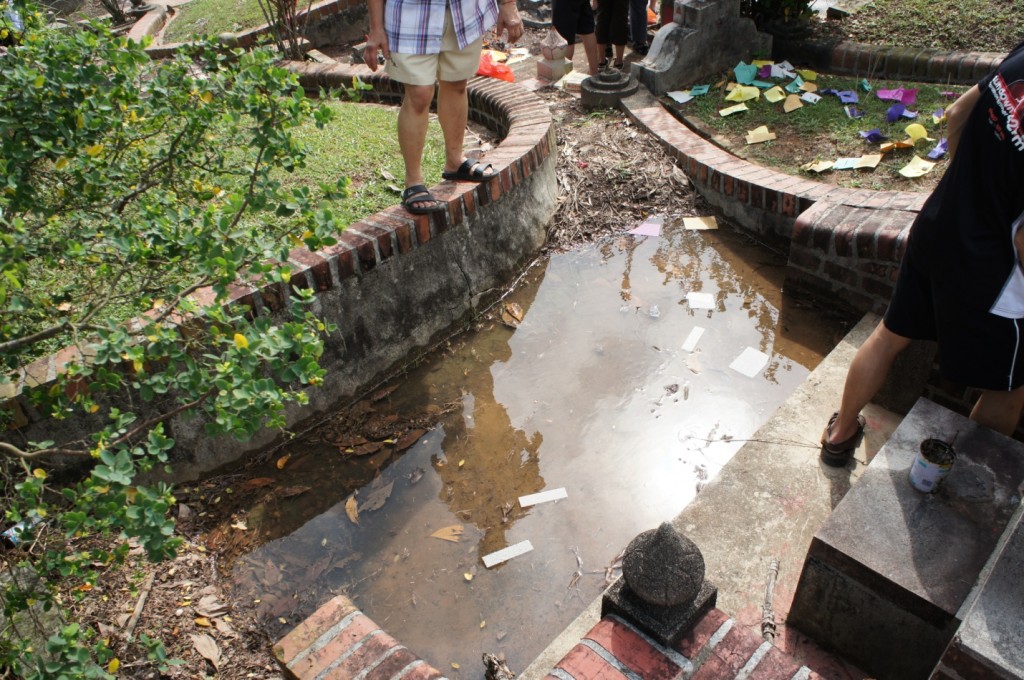
Shock when we reached great grandmother’s place. The heavy downpour throughout the night caused some flooding, or ‘im chwee’ in Hokkien. The flood was cleared by two of my Ah Peks later.

"Huat Kueh"on the headstone of my great grandmother together with red coloured paper taken from the stack of 5 coloured paper. Some use any stone or bricks in place of the Huat Kueh
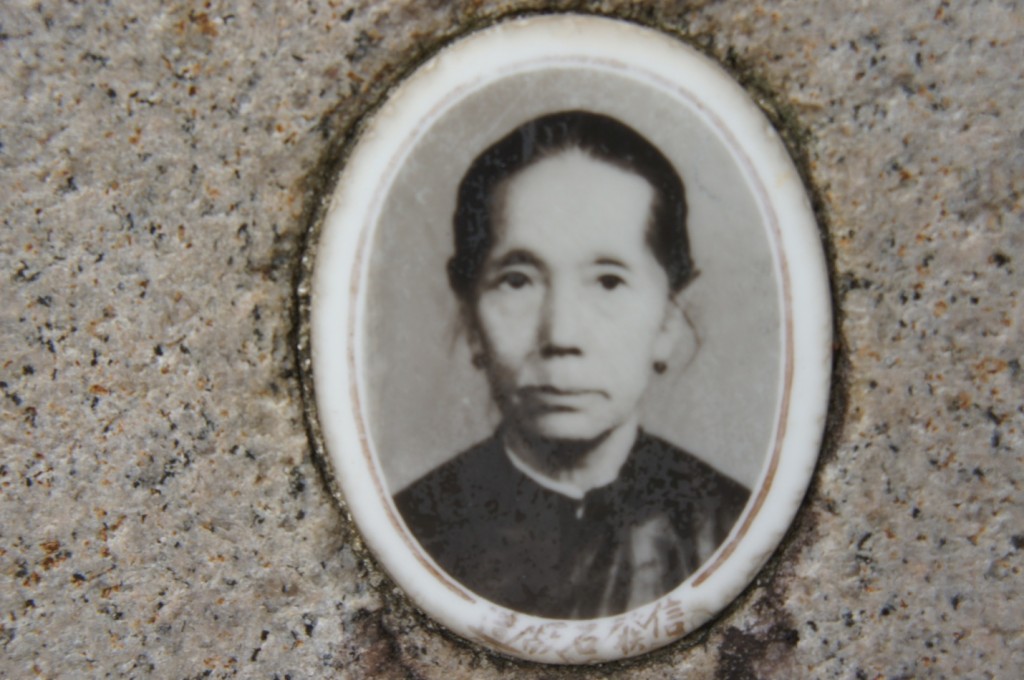
Great grandmother till clear more than half a century later. No renovating done. You can also see the company that built her grave
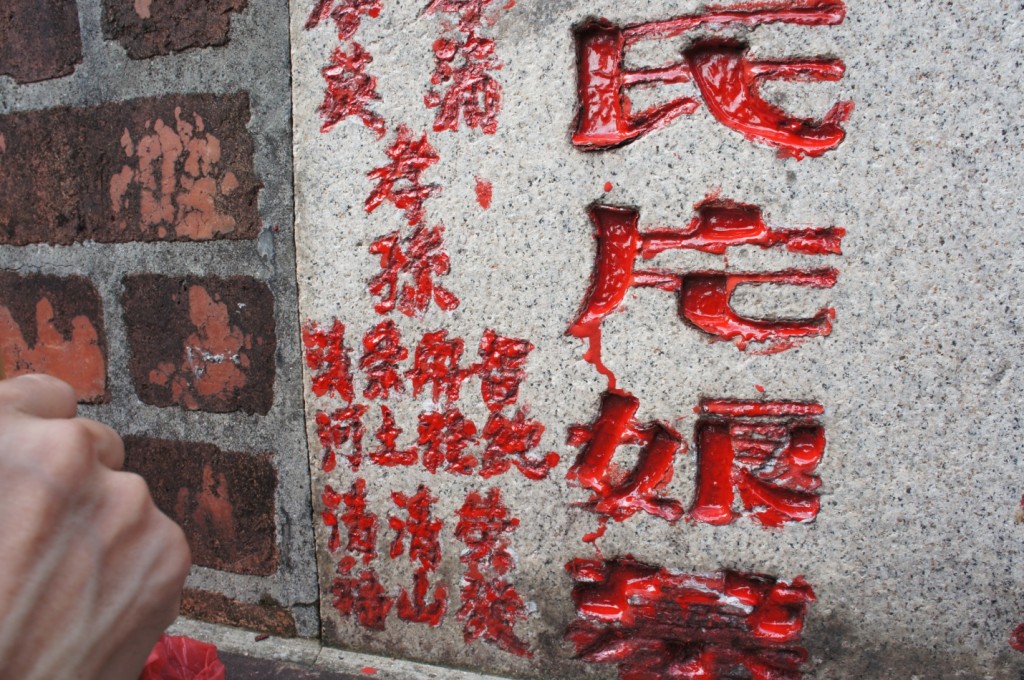
2 sons and 7 grandsons listed. In the old days, many graves did not have names of daughters and granddaughters listed.
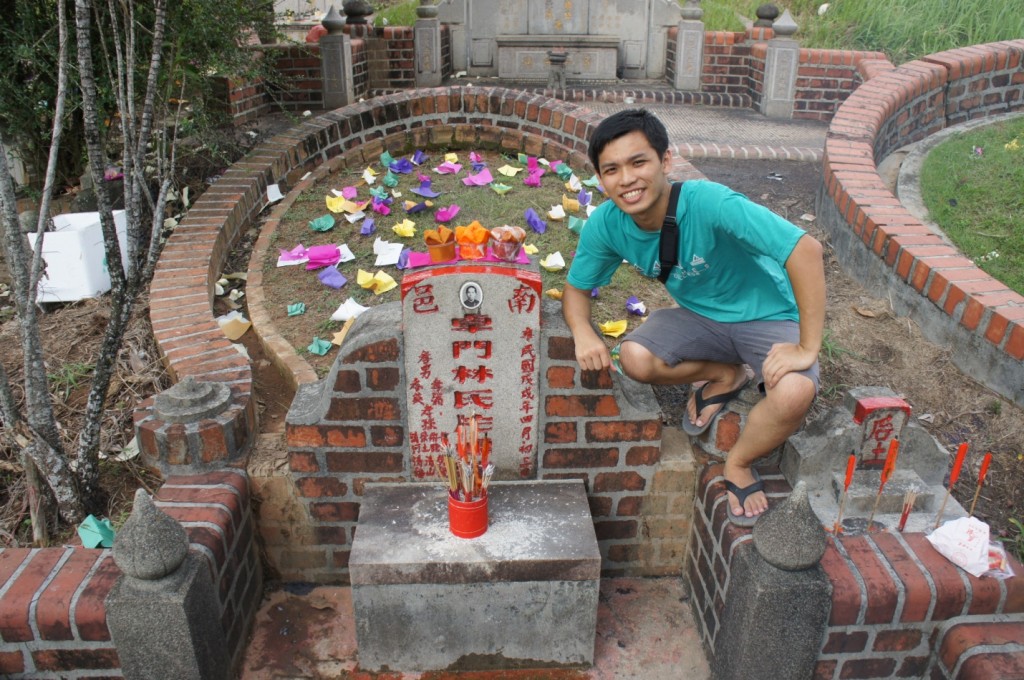
Final picture with my great grandmother before we left for Chua Chu Kang Chinese Cemetery. Notice the moat that prevents water from accumulating and which directs and channels water downhill. There was some flooding earlier, because of soil and debris that had choked the exit of the grave.
3rd Stop – Paternal grandfather @ Chua Chu Kang Chinese Cemetery
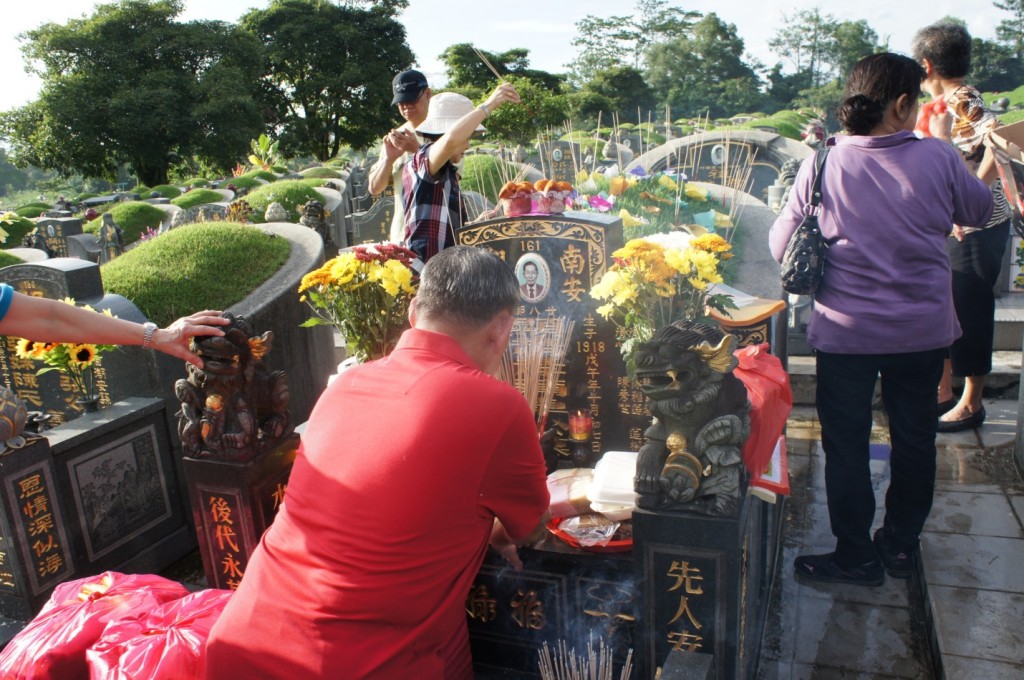
My grandfather’s grave. I noted the difference between the size of a new grave and the old graves earlier.

Incense paper, gold, silver etc for my grandfather. Notice the circle and dot in the middle? It ensures that this gets sent to only my Ah Kong. Just like how a crossed cheque works
4th Stop – Paternal grandmother @ Chua Chu Kang Chinese Cemetery
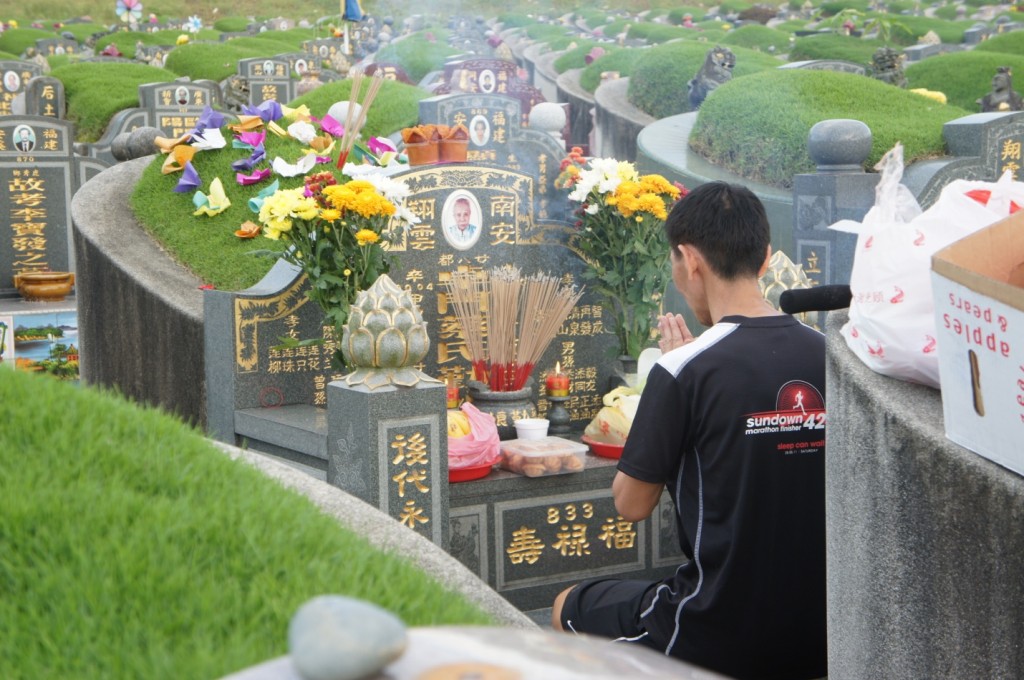
Quiet moment for my dad with his late mother. Last stop of the day before we went with my Ah Peks (uncle) and Ah Kor (aunties) to have dinner

Favourite drink (Milo) of my grandmother or Ah Mah as I address her in Hokkien. She also likes to eat kuehs like Kueh Bulu and cakes like Pandan Cake. It was only recently that I heard stories from my mother that my late Ah Mah (as a 70 year old lady) used to take a bus alone all the way from Changi to my maternal grandmother’s house at Joo Chiat to visit me when I was a child. Gamsia Ah Mah. Gamsia (Thank you)Mama
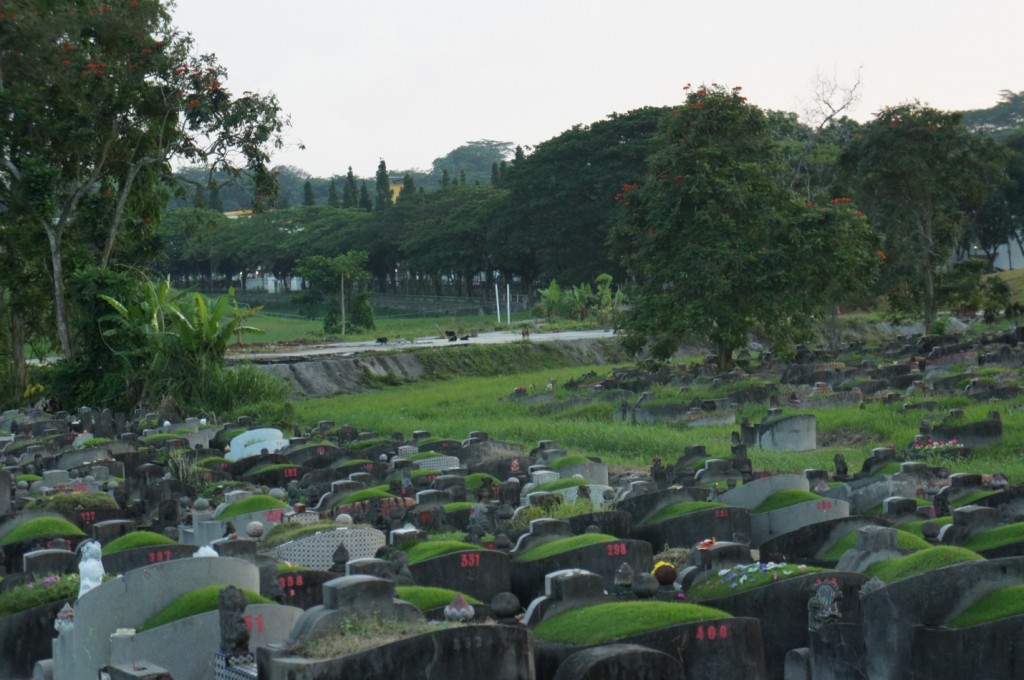
Lost in a sea of graves - a failed attempt to locate my maternal great grandfather who passed away in the late 1970s.
Postscript:
I wish to emphasize that every one of us needs to treasure the time we have with our loved ones and not wait until Cheng Beng to do so. While Cheng Beng gives us a formal occasion for the extended family to gather and reminisce about the past, what is even more important is the need to also enjoy the present and love your parents. Treasure the past, and enjoy the present – so that we can eventually embrace the future.
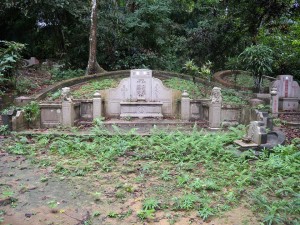
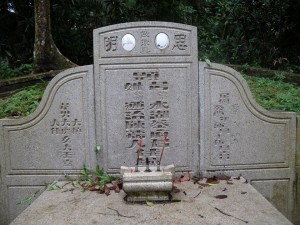

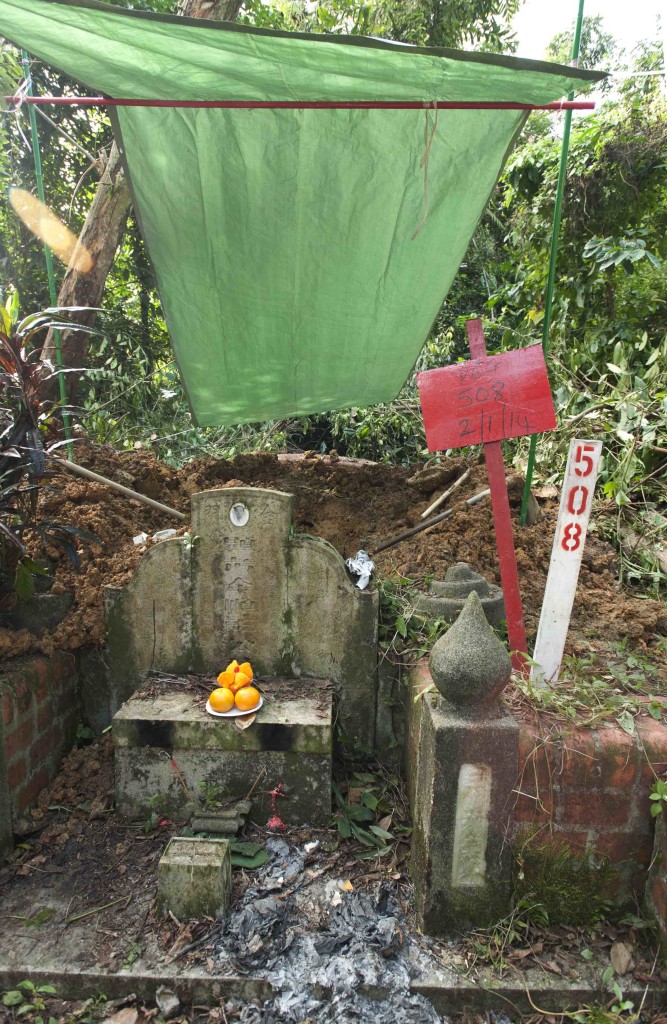


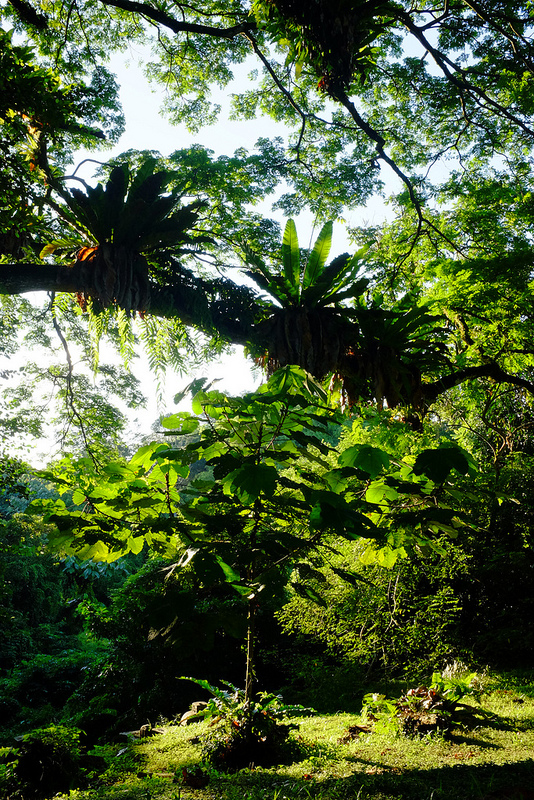

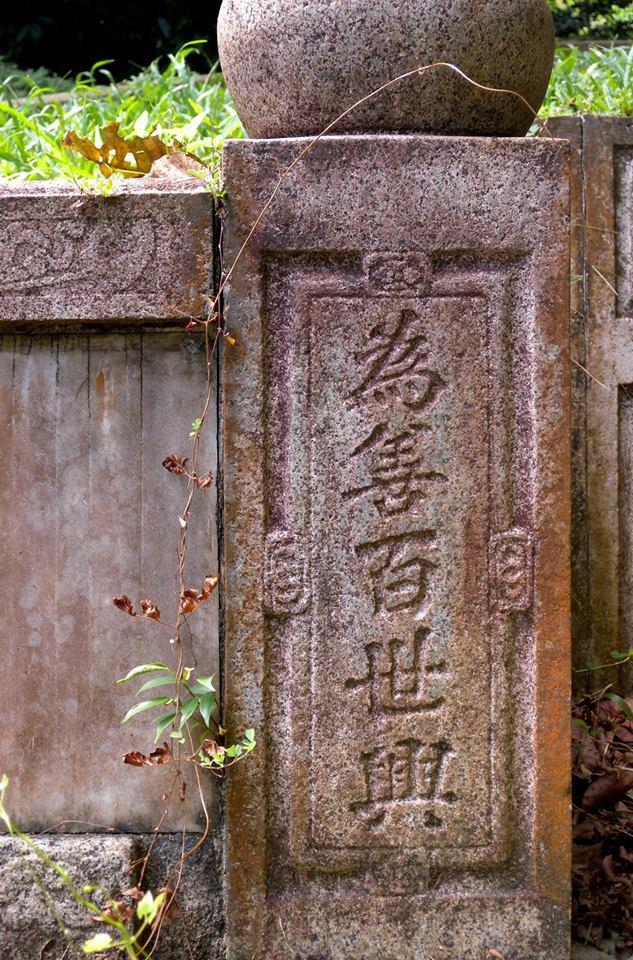
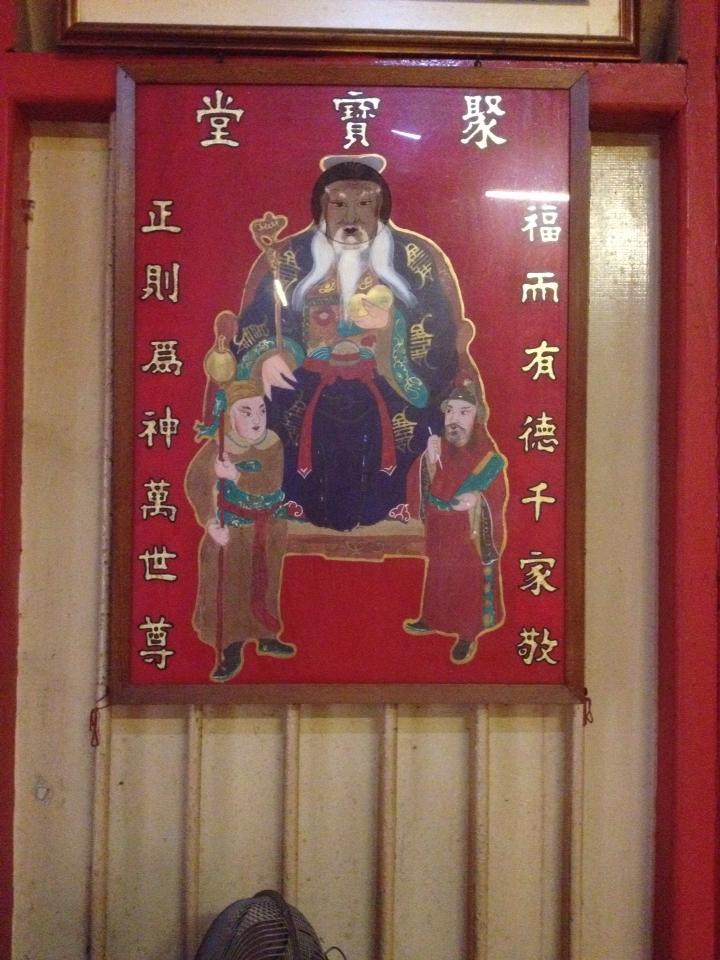
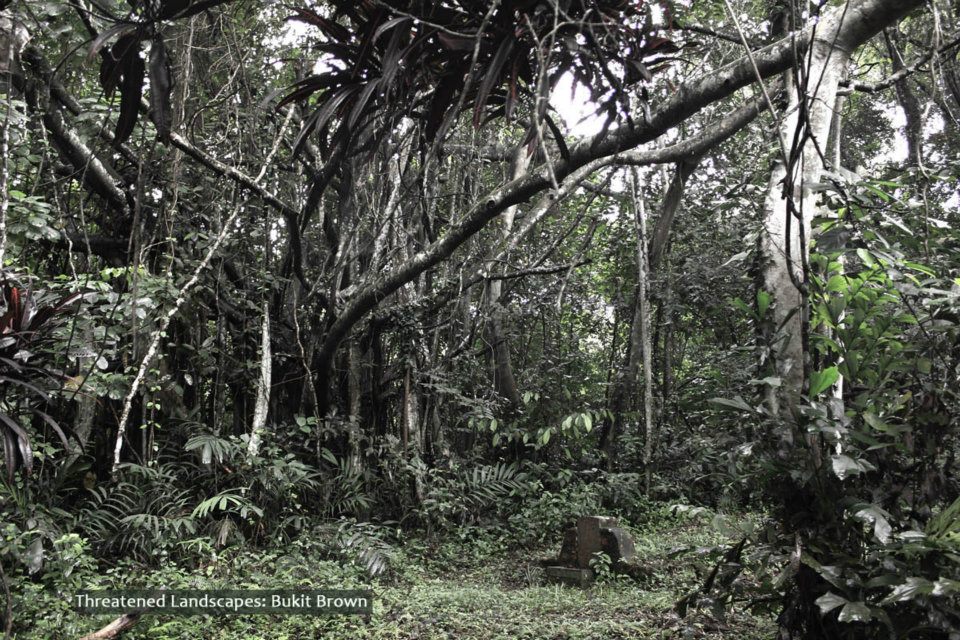
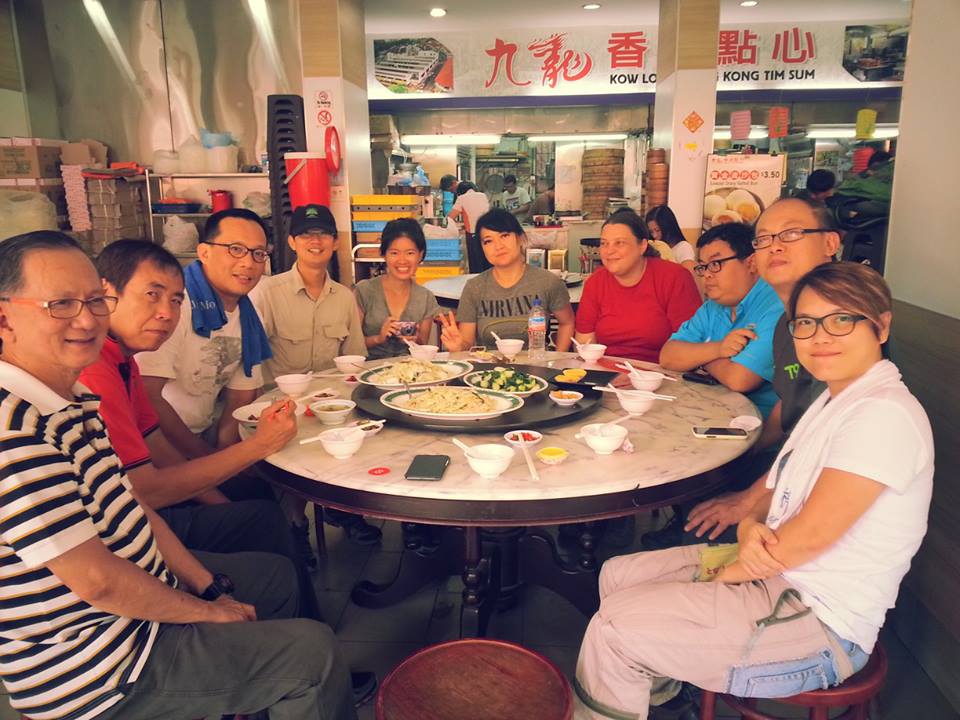




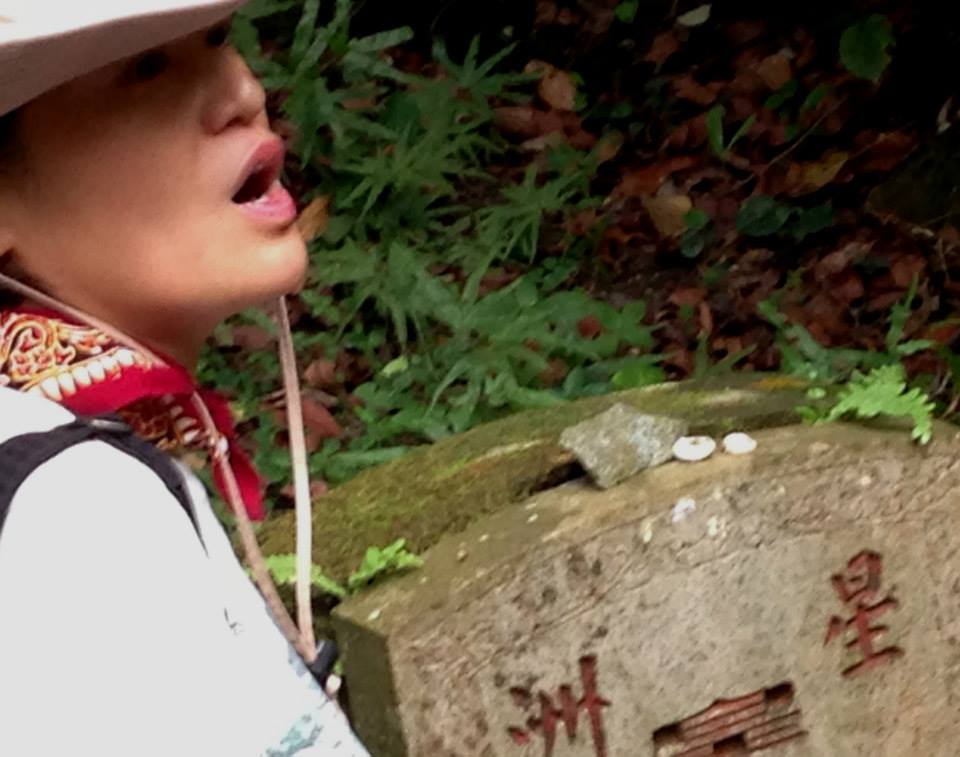
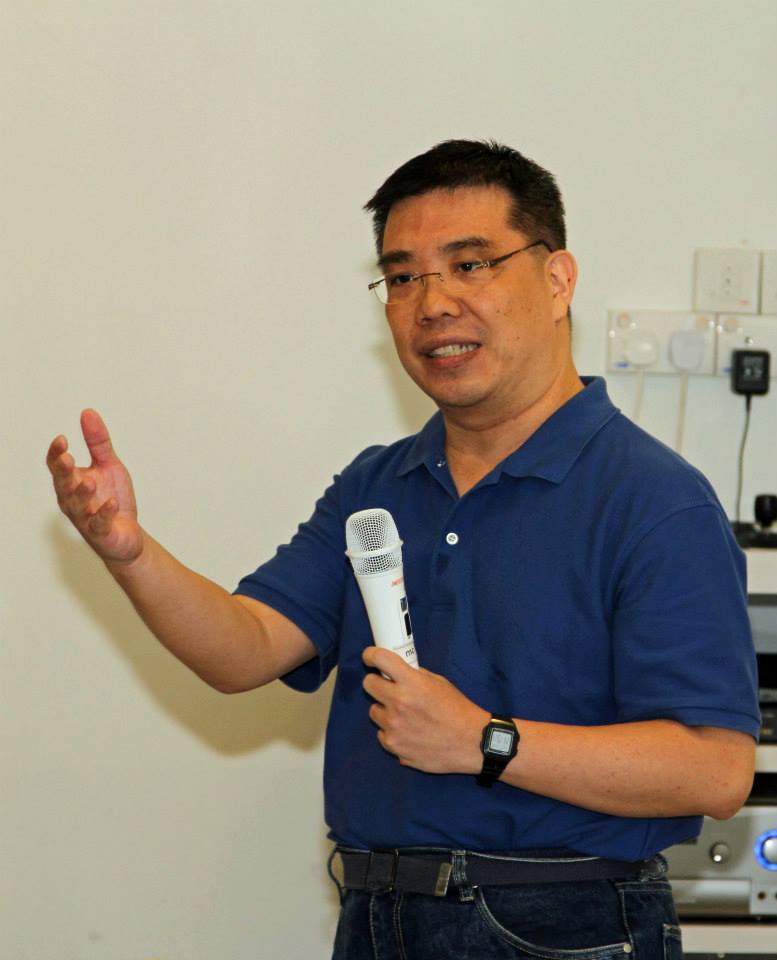



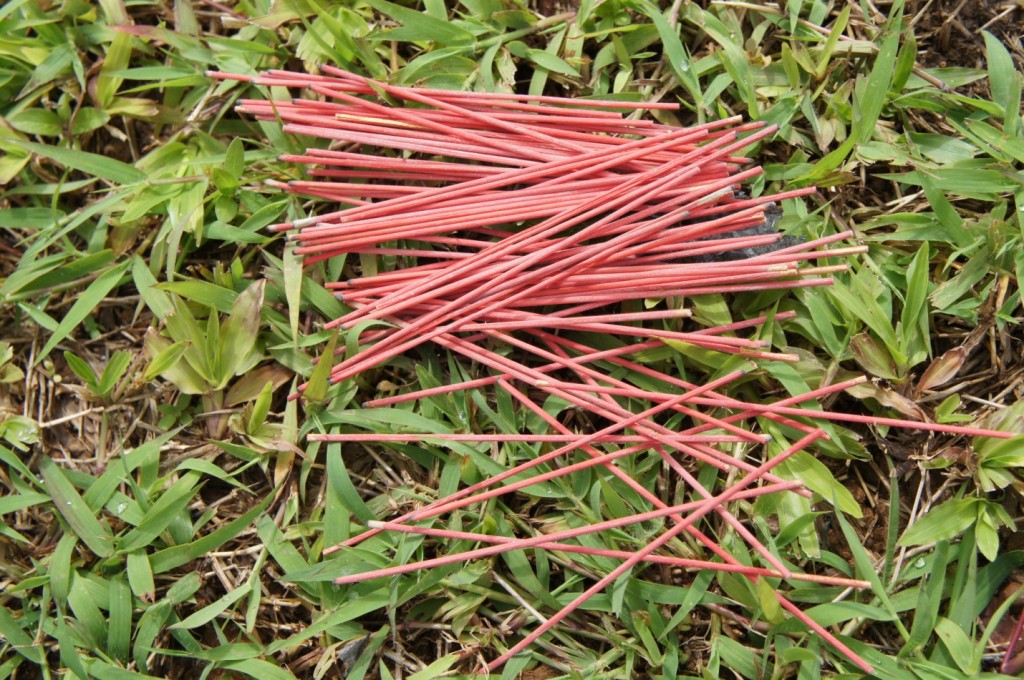
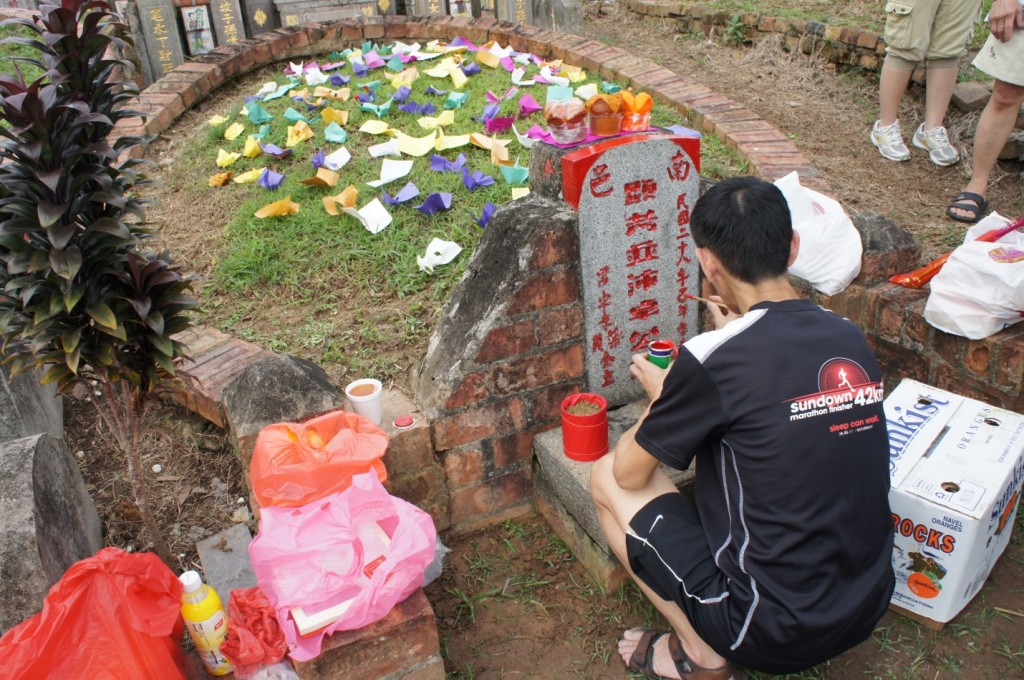
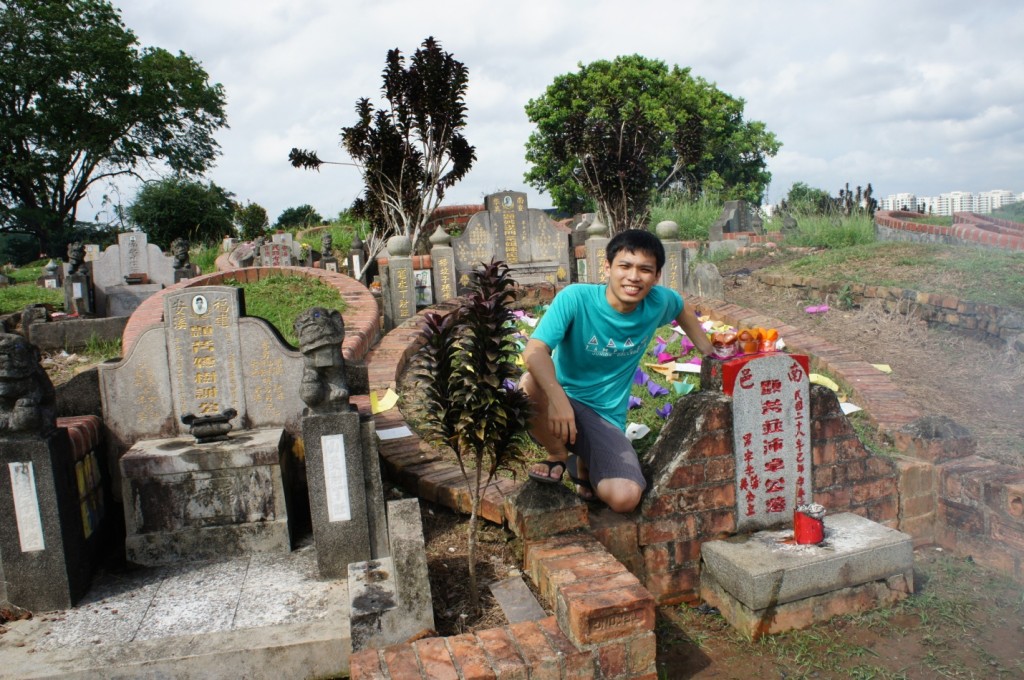
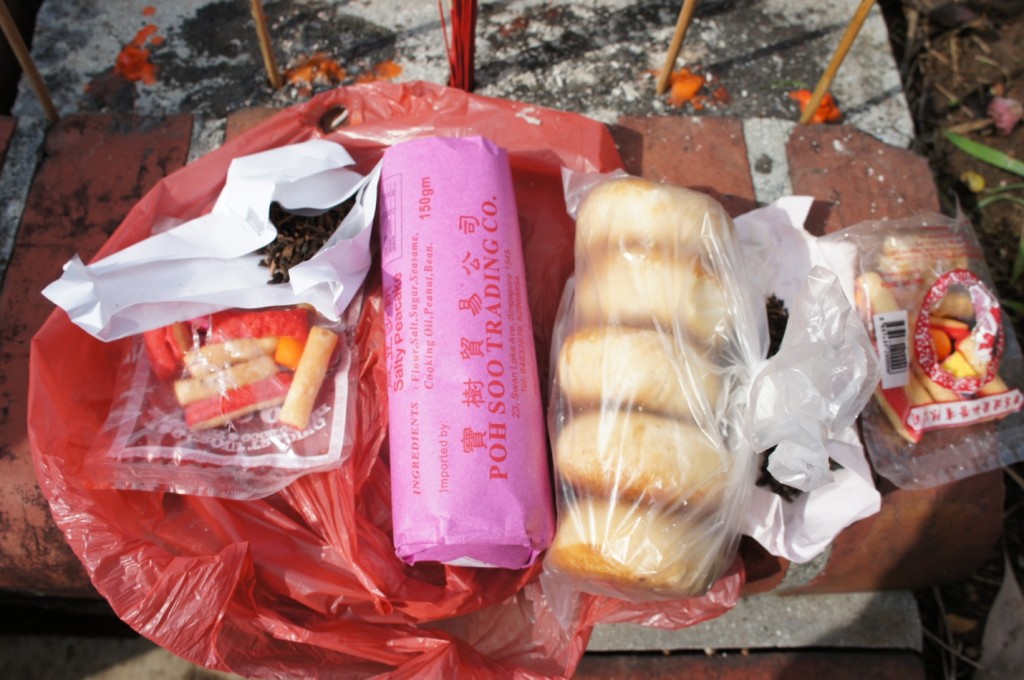
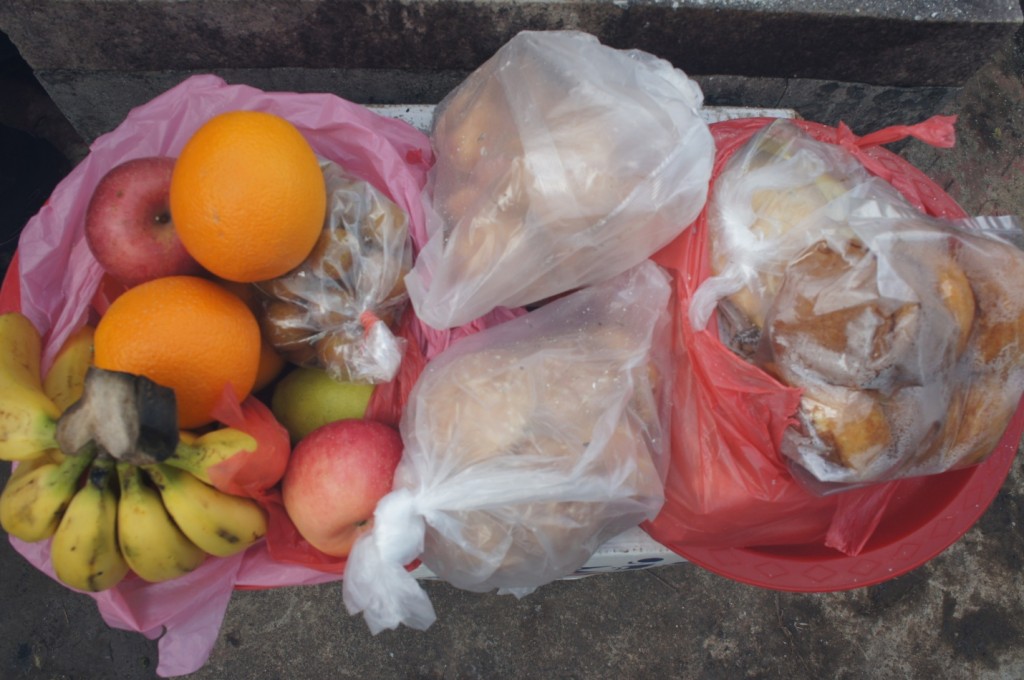
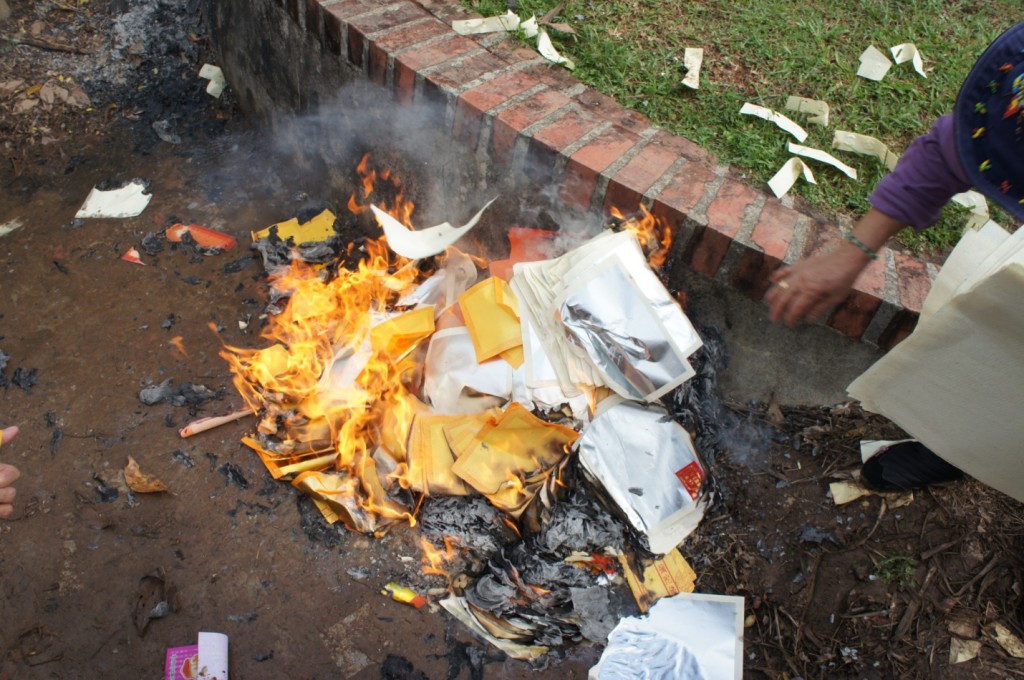
Recent Comments